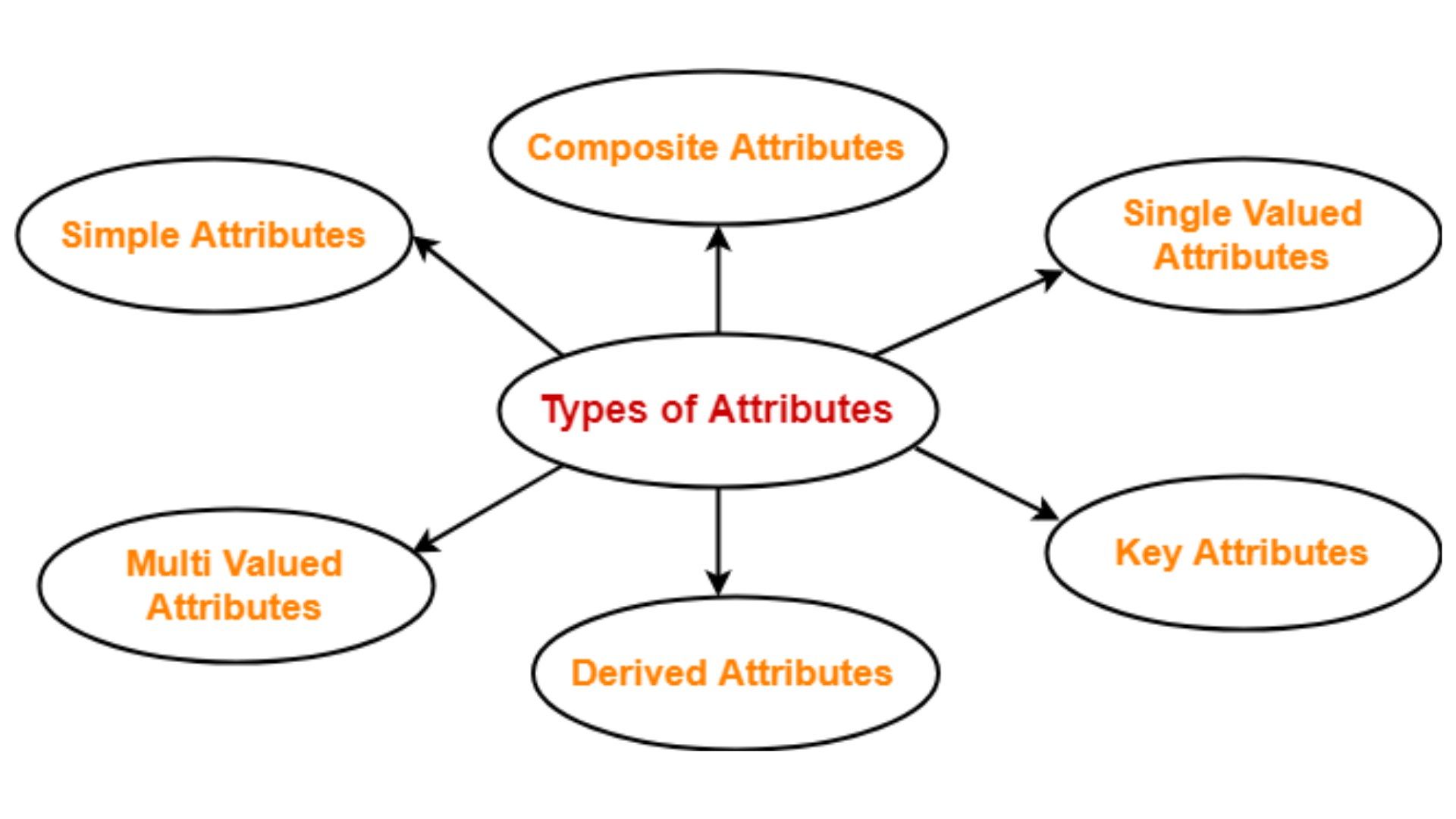Mastering DBMS: Learn Basics to Advanced Technique
Learn about Attributes in DBMS

Introduction
Attributes are the distinguishing characteristics that define an entity in a relational database. The attributes are further divided into six categories: Composite, Atomic, Single, Multi-Valued, Stored, and Complex Attributes.
When applied to each column cell in a relational database, attributes are the defining characteristics that characterize all the objects falling under a particular category. The values utilized to describe a particular member or attribute as a column in an entity table are known as attributes. If there are several students in a class, we may use attributes like a student's roll number, name, branch, age, etc., to identify each one of them uniquely. Students can use these qualities to describe an object.
Database Attributes Types
There are seven different types of attributes in DBMS.
- Simple Attributes
Simple Qualities are distinct attributes that cannot be further subclassified. Put another way; it is also referred to as atomic attributes.
A student, for instance, is an entity made up of the properties Roll No., Age, and Class. In this case, the Roll no property cannot be broken down into sub-attributes. Therefore, if the attribute cannot be divided further, it is a Simple Attribute.
2. Composite Attributes
Two or more basic qualities combine to form composite attributes. An individual's address may be a composite character of the individual's street address, city, state, and zip code. When attempting to express data succinctly, composite characteristics can be employed to build more intricate data models.
3. Single Valued Attributes
Values that are used to describe the entity are stored in attributes. Single Valued Attributes are those attributes that can only hold one value. These properties are unable to store multiple values.
For instance, the Employee entity's properties include the Employee ID, DOB, and Gender. An employee only has one date of birth and one employee id, both of which are distinct. Therefore, these properties can only hold one value. As a result, they are referred to as single-valued attributes.
4. Multivalued Attributes
Multiple values are possible for multivalued characteristics. A person could have several phone numbers or email accounts, for instance. In DBMS, multivalued attributes are frequently used to describe entities' connections. For instance, a "dependents" multivalued attribute on an employee object may contain the names of the employee's dependents. Multivalued properties can also represent hierarchical data.
5. Derived Attributes
The attribute is described by name alone. The value of one attribute can be used to generate other characteristics, known as derived attributes. For instance, we may get the age using the date of birth data. As a result, the DOB information may be used to determine the Age attribute.
6. Complex Attributes
Both multivalued and composite properties are included in the DBMS complex attribute. For instance, if someone has many homes, each home may have multiple phones. Therefore, the phone is regarded as a complicated property.
In the previous illustration, the area code, exchange, and line number are composite attributes that make up the phone number. Complex attributes are often employed in database architecture to express relationships between entities. Here is an illustration of a difficult character that is explained.
7. Key Attributes
Every entity has a unique value for a specific property that serves as the entity's identification in the entity set. Key properties must have a unique value that cannot be repeated.
For instance, the key property for the employee entity is the employee id, the key attribute for the student entity is the roll no, and the key attribute for the place entity is the Pincode.
Conclusion
Any database model must have attributes as a crucial component. This blog examined the various DBMS attribute types and their applications to database systems. We also looked at a few instances to better comprehend the ideas around entities and attributes in DBMS.
